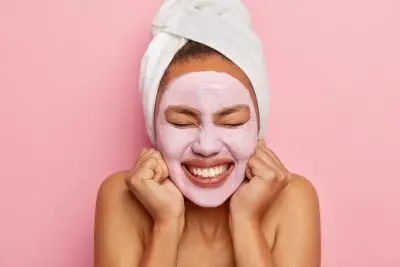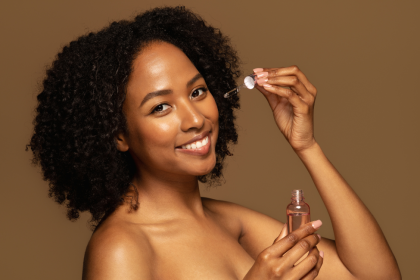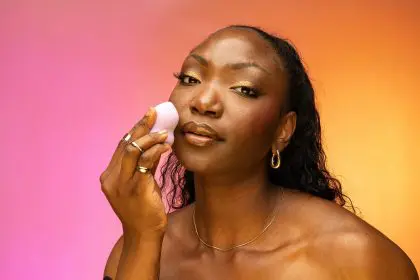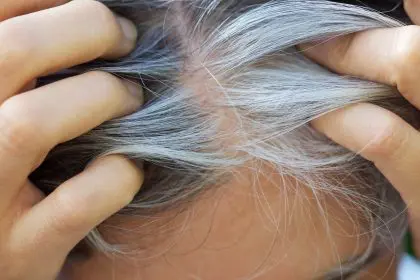Your daily skincare routine might be sabotaging your complexion in ways you never imagined. While you diligently cleanse, moisturize, and apply treatments with the best intentions, certain common practices could be creating lasting damage that becomes increasingly difficult to reverse over time. These seemingly harmless habits accumulate their destructive effects gradually, making them particularly insidious because the damage often doesn’t become apparent until years later.
The misconceptions surrounding proper skincare have created a generation of well-intentioned individuals who unknowingly engage in practices that accelerate aging, create persistent skin problems, and even cause permanent structural changes to their complexion. Understanding these hidden dangers becomes crucial for anyone who wants to maintain healthy, youthful-looking skin throughout their lifetime.
The beauty industry’s marketing messages often contribute to these damaging practices by promoting aggressive treatments, complicated routines, and products that promise miraculous results. However, skin health operates on principles that often contradict popular beauty trends, creating a disconnect between what people believe helps their skin and what actually promotes long-term skin wellness.
The aggressive cleansing trap
- Over-cleansing strips away protective barriers that skin needs to maintain its health and resilience. This destructive pattern involves washing the face multiple times daily, using harsh cleansing products, or scrubbing aggressively in an attempt to achieve perfectly clean skin. The obsession with removing every trace of oil, dirt, and impurities actually damages the skin’s natural protective mechanisms.
The skin’s acid mantle, a thin protective layer that maintains proper pH balance and prevents harmful bacteria from penetrating, requires natural oils to function properly. Excessive cleansing removes these essential oils faster than the skin can replace them, leaving the complexion vulnerable to irritation, infection, and premature aging.
Over time, aggressive cleansing creates a cycle of damage where the skin becomes increasingly sensitive and reactive. The compromised barrier function leads to chronic inflammation, which breaks down collagen and elastin fibers that keep skin firm and smooth. This inflammatory process accelerates the formation of fine lines, wrinkles, and age spots that might not have developed for years under normal circumstances.
The long-term consequences of over-cleansing include permanently enlarged pores, chronic dryness that doesn’t respond well to moisturizers, and increased sensitivity that makes the skin reactive to products that were previously well-tolerated. These changes often become irreversible because the skin’s natural repair mechanisms become compromised through constant irritation.
The exfoliation obsession
- Excessive exfoliation creates microscopic wounds that accumulate over time to cause significant structural damage to the skin’s surface. This harmful practice involves using physical scrubs too frequently, combining multiple exfoliating products in the same routine, or using chemical exfoliants at concentrations or frequencies that exceed the skin’s ability to recover.
The skin naturally sheds dead cells through a carefully regulated process that takes approximately 28 days to complete. Artificial acceleration of this process through aggressive exfoliation disrupts the skin’s natural renewal cycle, forcing immature cells to the surface before they’re ready to provide adequate protection.
Chronic over-exfoliation leads to a condition where the skin becomes perpetually raw and inflamed, unable to complete its natural healing and renewal processes. This constant state of irritation triggers the production of inflammatory compounds that break down the proteins responsible for skin strength and elasticity.
The permanent damage from excessive exfoliation includes thinning of the skin’s protective layers, increased photosensitivity that makes sun damage more likely and severe, and the development of persistent redness or hyperpigmentation that becomes increasingly difficult to treat. Many individuals who engage in aggressive exfoliation for years find that their skin becomes permanently sensitized and reactive.
The sun protection failures
- Inconsistent sun protection accelerates irreversible aging in ways that become increasingly apparent as time passes. This devastating mistake involves skipping sunscreen on seemingly low-risk days, applying insufficient amounts of protective products, or relying on makeup or moisturizers with minimal SPF as primary sun protection.
Ultraviolet radiation causes both immediate and cumulative damage to skin cells, with the cumulative effects becoming the primary driver of premature aging, hyperpigmentation, and skin cancer development. Even brief, repeated exposures without adequate protection contribute to DNA damage that accumulates over time to create visible signs of aging.
The misconception that sun protection is only necessary during beach days or summer months leads many people to expose their skin to harmful radiation during daily activities. Driving, walking to work, sitting near windows, and other routine activities provide sufficient UV exposure to cause significant long-term damage when protection is inconsistent.
The permanent consequences of inadequate sun protection include deep wrinkles that don’t respond well to topical treatments, age spots and hyperpigmentation that require aggressive interventions to improve, and textural changes such as leathery or rough skin that reflects damaged collagen structures beneath the surface.
The product mixing disasters
- Incompatible product combinations create chemical reactions that can cause immediate burns or long-term sensitization that permanently alters skin function. This dangerous practice involves layering active ingredients without understanding their interactions, using products with conflicting pH requirements, or combining treatments that amplify each other’s potency to harmful levels.
Common problematic combinations include using retinoids with alpha hydroxy acids, mixing vitamin C with certain acids, or layering multiple active ingredients without proper spacing or preparation. These combinations can create chemical reactions that literally burn the skin or cause severe irritation that leads to lasting damage.
The skin’s tolerance for active ingredients has limits that vary among individuals, but exceeding these limits through poor product combinations can cause sensitization reactions that become permanent. Once the skin becomes sensitized to certain ingredients, it may never regain the ability to tolerate them, severely limiting future treatment options.
Long-term consequences of product mixing disasters include chronic contact dermatitis that makes the skin constantly inflamed and reactive, permanent changes in pigmentation that create uneven skin tone, and scarring from severe reactions that cannot be fully corrected through subsequent treatments.
The picking and manipulation habit
- Constant touching and picking creates trauma that leads to scarring, hyperpigmentation, and bacterial infections that can cause permanent textural changes to the skin. This compulsive behavior involves squeezing blemishes, picking at dry skin, constantly touching the face throughout the day, or manipulating skin imperfections in ways that worsen rather than improve them.
The mechanical trauma from picking and manipulation disrupts the skin’s natural healing processes, often turning minor blemishes into significant wounds that heal improperly. The pressure and friction from constant touching also spreads bacteria across the skin surface, leading to additional breakouts and infections.
Chronic manipulation creates a cycle where the damage from picking leads to more imperfections, which then become targets for additional picking. This cycle can continue for years, creating increasingly severe damage that becomes progressively more difficult to reverse.
The permanent consequences include ice pick scars that require professional treatment to improve, post-inflammatory hyperpigmentation that can take years to fade, and textural irregularities that give the skin a permanently uneven appearance. These changes often persist long after the picking behavior stops because the structural damage has altered the skin’s architecture.
The cumulative effect of multiple mistakes
Most individuals don’t engage in just one damaging skincare practice but rather combine several of these mistakes in ways that amplify their destructive effects. The combination of over-cleansing with excessive exfoliation, for example, creates exponentially more damage than either practice alone would cause.
The cumulative nature of skincare damage means that years of minor mistakes can create major problems that require significant intervention to address. Skin that has been subjected to multiple damaging practices often becomes so compromised that it cannot respond normally to corrective treatments.
Understanding the interconnected nature of these skincare mistakes helps explain why some individuals experience persistent skin problems despite using expensive products and following elaborate routines. The foundation of skin health must be restored before advanced treatments can provide meaningful benefits.
Recognizing the signs of damage
Early recognition of skincare damage provides the best opportunity for intervention before changes become permanent. Warning signs include increased sensitivity to products previously well-tolerated, persistent redness or irritation that doesn’t resolve with gentle care, changes in skin texture that feel rough or uneven, and the appearance of fine lines or age spots that seem premature for chronological age.
The progression of skincare damage often follows predictable patterns that accelerate over time. Initial signs such as occasional irritation or sensitivity gradually evolve into chronic problems that affect daily comfort and appearance. Recognizing these early warning signs allows for intervention while the skin retains most of its natural repair capacity.
Professional evaluation becomes important when skincare damage has progressed beyond what can be addressed through routine modifications. Dermatological assessment can determine the extent of damage and provide guidance for appropriate corrective treatments.
Prevention and damage limitation
Preventing further skincare damage requires understanding the principles of healthy skin function rather than following popular beauty trends. Gentle, consistent care that supports the skin’s natural processes typically produces better long-term results than aggressive treatments that promise dramatic improvements.
The foundation of damage prevention includes using mild cleansers appropriate for individual skin types, limiting exfoliation to levels the skin can easily tolerate, applying broad-spectrum sunscreen daily regardless of weather or planned activities, researching product compatibility before combining active ingredients, and developing awareness of manipulative behaviors that cause mechanical trauma.
Recovery from skincare damage often requires patience and consistent application of proper techniques over extended periods. The skin’s natural repair processes operate slowly, particularly when previous damage has compromised normal cellular function.
Building a protective routine
Establishing skincare practices that protect rather than damage the skin involves simplifying routines to focus on essential functions rather than pursuing complicated regimens with multiple active ingredients. The most effective protective routines typically include gentle cleansing, appropriate moisturization, consistent sun protection, and selective use of proven treatments at frequencies the skin can tolerate.
The goal shifts from pursuing dramatic transformations to maintaining optimal skin health over time. This approach prevents the accumulation of damage that leads to premature aging and persistent skin problems while supporting the skin’s natural ability to repair and renew itself.
Long-term skin health requires viewing skincare as a lifestyle practice rather than a series of quick fixes or dramatic interventions. The compound benefits of consistent, appropriate care become increasingly apparent over time, creating a complexion that ages gracefully rather than showing the effects of years of inadvertent damage.


















